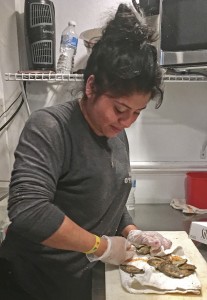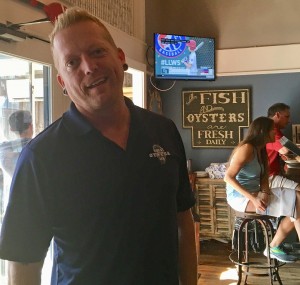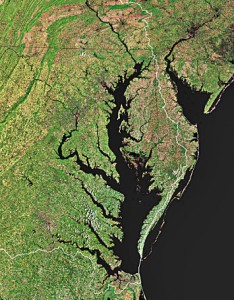What do folk like to do on a Friday evening, perhaps downing a “happy hour” beverage and that iconic bivalve, an eastern oyster, from the Chesapeake Bay?
Don Peterson, from Brunswick, Maryland, said, “I didn’t like oysters when I was a kid. But I went down to Jacksonville Beach, in Florida, and found I like them, and like them best, raw, and I eat them as white as you can get ‘em.” Some favor the Blue Water Daquiri and Oyster Bar in Jacksonville.
Closer to home, Magnolia’s at the Mill in Purcellville, get its oysters from the War Shore Oyster Company, according to Magnolia’s floor manager, Julie Dalrymple, and they almost always “get them once a week and serve them as ‘specials’.”
Lovettsville’s Market Table Bistro gets their oysters from Chincoteague and further up the east coast from Nantucket, according to Eddie Johnston, the “front of the house” manager at the Bistro.
“We get 100 to 150 at a time,” said Eddie, “and serve them as a ‘special,’ our innovation of ‘Oyster Rockefeller.’”
(The original recipe, so rich to the taste, so the story goes, made it natural to name the dish after after Rockefeller who was also “rich”; the original secret recipe was first created in New Orleans’ Antoine’s in 1899.)
The Red Fox Inn in Middleburg serves oysters on the half shell with a blood orange guest drink, usually on holidays.
The King Street Oyster Bar in Leesburg is where the oyster devotees go who can’t wait for “specials;” Chris Riley, a Manager, said, “We get our oysters within 24 hours of harvest, and they come from places near and far.”
In the shadows, however, is the challenge that, if you want to keep eating oysters, we all have to know that they are at risk.
Our oyster population has been shrinking in the Chesapeake Bay.
In Alqonquin, Chesapeake means “great shellfish Bay.”
The Bay covers 64,000 square miles, 11,684 miles of shoreline, 150 major rivers and streams, and don’t forget the 18 million people who live close by some part of the Bay or other.
In colonial times, the 60 foot reefs of oysters were navigational hazards to European settlers.
But they have shrunken dramatically.
The Watermen first used hand tongs to harvest oysters, before they dredged them, and, at the height of the early harvests, they pulled up 17 million bushels of oysters a year.
In the 1980s, the Oyster population suffered from disease, both Dermo disease (Perkinsus marinus) and MSX disease (Haplosporidium nelson).
With the loss of forested land because of development, more nutrients and sediments have flooded our rivers and streams out where we live, right here in Loudoun, and closer to the Bay.
This has compromised the water quality in the Bay, creating algae blooms, leading to low oxygen dead zones that have hindered the development of oyster larvae; there has also been too much sediment that can suffocate oysters.
The Bay has lost more than 98 percent of its oysters since colonial times.
You may not ever eat an oyster, you may be entirely indifferent to the cuisine, but oysters have a feature that everyone should celebrate.
Every adult oyster is a filter feeder, meaning, each can clean up to 50 gallons of water a day in the Bay – eliminating algae, dirt and nitrogen.
An oyster feeds by pumping water through its gills, trapping particles of food as well as nutrients, and suspended sediments and chemical contaminants.
Once oysters filtered the entire Bay in three or four days; with the present diminished population, however, it takes nearly a year.
As oysters grow, their larvae, called spat, settle on top of adult shells. These accumulating layers of oysters once were forbidding reefs in height, with many nooks and crannies, creating, if you will, “apartments” for small fish and invertebrates to live and to avoid the larger fish, the anemones, flatworms, mud crabs, and more.
The oyster restaurants you visit may re-cycle the shells, return them to the Bay, to help create the eco-system oysters need to survive and thrive.
When we keep our water clean closer to home, control run off, nutrients and more, we increase the chance for years to come of a happy hour with oysters on the half shell and filter feeding oysters that may help clean the Chesapeake Bay.





Pingback: Oysters and you! – Carlos Smith